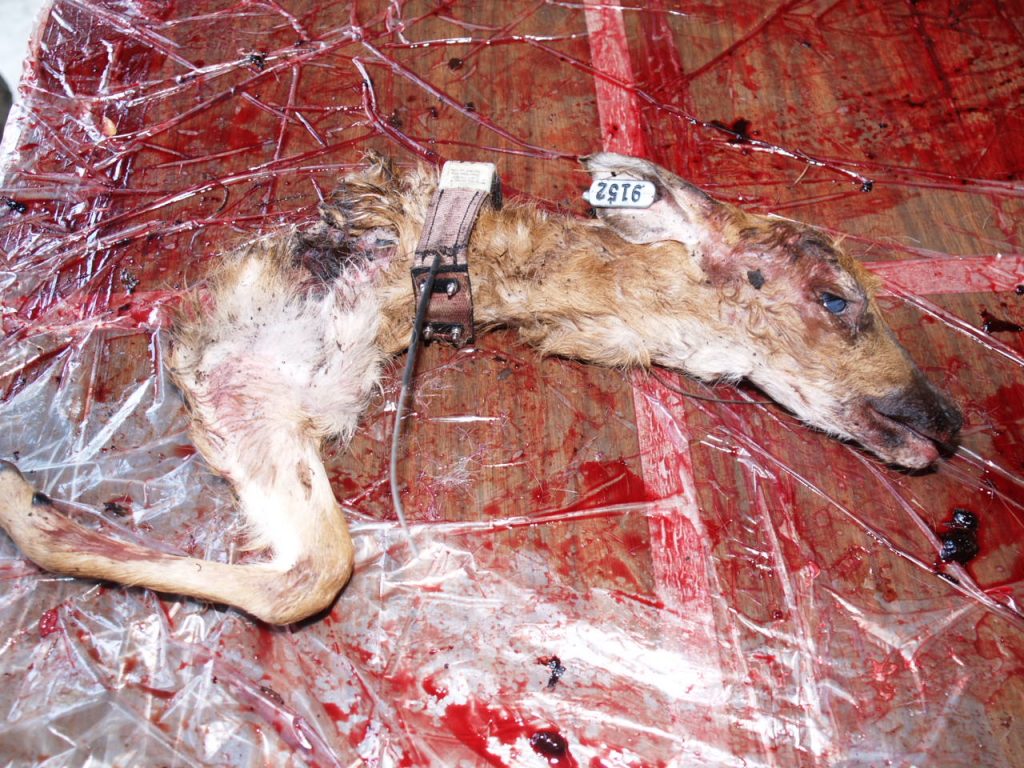On June 25th, the signal went out – a mortality signal that is. The team assembled and headed into the woods to collect what was left of 9152. The recovery team gathered the evidence and the carcass and delivered it to us.
On the necropsy table lay the head, neck, and left front leg of 9152. This fawn was captured on June 4th, the peak of fawning season, and weighed 8 lbs.
We got to work. No weight was taken as we only had a partial carcass. There appeared to be bite marks on the head. Out came the knives. The first step is to skin the carcass.
Many secrets can be revealed on the inside.
There were cranial punctures of 6 mm X 4 mm and 8 mm X 5 mm and there were 4 cm between the associated punctures.

There was a crushing fracture on the right side of the skull and a fractured right mandible (jaw bone) as well. We also noted a lacerated trachea.
The carcass told us everything it could. Now we needed context – to the field report!
The recovery team noted that the carcass was cached in a large depression, well covered under humus and leaves. There wasn’t much sign around the cache other than new and old deer sign – no tracks or scat.
So what killed 9152?
Looking at the scene, our recovery team speculated that it was a bobcat. Bobcats cache their prey. And with little else to go on (no clues surrounding the cache), this was a reasonable assessment. But the necropsy suggested different. That’s why this is a two-part process.
Bobcats do cache their prey and leave puncture wounds in the skull, especially the neck. A crushed trachea with little bruising is usually the calling card of the bobcat as well.
But this fawn did not have a crushed trachea. It was lacerated (cut). And the coup de grâce was the pair of puncture wounds in the skull. Bobcats produce small diameter puncture wounds of 1-3 mm about 10-15 mm apart. The puncture wounds discovered in this fawn’s skull were much larger. The only predator with canines that big in Penn’s Woods is a bear.
Mind you, this was a very neat bear. Bears are bruisers and their kill sites reflect this. They have no problems making a mess of the place – wallows, trails, saplings and trees broken and smashed, hair, and scat. They really don’t care who finds the site or if they are fingered as the guilty party.
Caching is infrequent by bears because there usually isn’t enough left of the carcass to cache. Why save for later what you can eat right now?
DNA swabs were taken in the field. If the samples yield DNA, the true identity of the killer will be revealed. However given the evidence, we feel confident in issuing a warrant for Yogi’s arrest.
-Jeannine Fleegle, biologist
PGC Deer and Elk Section
If you would like to receive email alerts of new blog posts, subscribe here.
And Follow us on Twitter @WTDresearch
